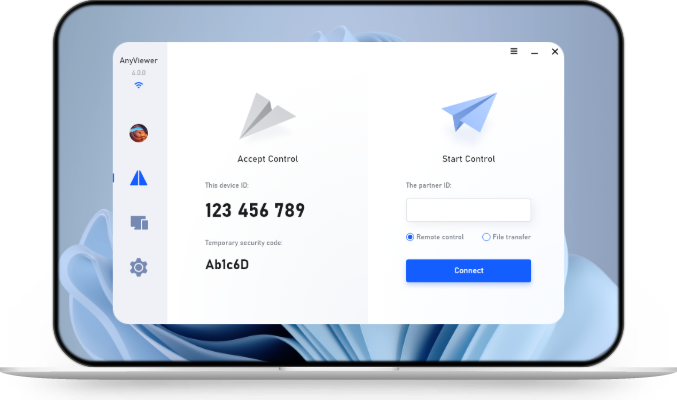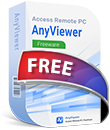The Ultimate Guide to Remote Configuration of Machines
In this guide, we’ll explore the concept of remote computer access, dive deep into the remote computer access product line, and recommend the best tools for both business and personal use. From security features to user experience, we’ll cover it all, with a strong recommendation for AnyViewer as the best choice.
Introduction
In today’s fast-paced digital world, managing machines remotely has become a necessity, not just an option. With businesses running globally, IT professionals need to configure, maintain, and troubleshoot devices without physically being there. That’s where remote configuration of machines comes into play. It lets you tweak settings, update systems, and ensure security—without leaving your desk.
But with this convenience comes a flood of questions. How does it work? Is it secure? Which tool is best for the job? You’re in the right place! This article will walk you through everything you need to know about remote configuration of machines and tools, including why AnyViewer is the best tool to get the job done.
What is Remote Configuration of Machines?
Remote configuration of machines and tools refers to the process of managing and configuring devices or systems from a remote location. Instead of being physically present, IT professionals can control various settings, install updates, troubleshoot issues, and even manage entire networks from anywhere with an internet connection. It’s like having the power of your entire IT department in the palm of your hand. Remote configuration is crucial for businesses with multiple locations, remote workers, or teams needing immediate access to machines without being on-site. With the growing need for efficiency and flexibility, this process has become a game-changer for companies worldwide.
The Evolution of Remote Configuration
Remote configuration didn’t happen overnight. Initially, configuring machines required physical presence. Engineers and IT specialists had to be on-site to modify settings or upgrade software. As businesses grew globally, the need for remote solutions became evident.
The rise of the Internet and cloud computing made it possible to connect devices from different locations. Today, we can configure everything from industrial robots to household appliances from anywhere with a stable internet connection. This shift has dramatically transformed how industries manage their equipment and operations.
Benefits of Remote Configuration
There’s a long list of advantages to adopting remote configuration, including:
- Increased Efficiency and Productivity: Tasks that once took hours or days can now be completed in minutes. You can configure multiple machines simultaneously, reducing manual labor and speeding up processes.
- Reduced Downtime: If a machine malfunctions, the remote configuration allows for swift troubleshooting and fixes without waiting for a technician to arrive on-site.
- Cost-Effectiveness: Less downtime and fewer on-site visits mean lower operational costs. Companies can save on travel expenses, reduce labor hours, and minimize machine downtime.
- Flexibility and Scalability: Whether you’re managing 10 devices or 10,000, remote configuration tools provide the flexibility to scale operations without massive infrastructure changes.
Key Technologies Enabling Remote Configuration
Several technologies power the remote configuration of machines:
- Internet of Things (IoT): IoT devices allow for real-time monitoring and configuration. For example, smart factory sensors can be configured to change operational settings remotely.
- Cloud Computing: Cloud-based platforms like Microsoft Azure or AWS IoT enable centralized control over vast networks of machines.
- Virtual Private Networks (VPNs): VPNs secure the communication between machines and administrators, ensuring safe configuration over the internet.
- Secure Shell (SSH) and Remote Desktop Protocol (RDP): SSH allows for secure access to a machine’s command line, while RDP enables full remote desktop access, making it possible to adjust settings as if you were physically present.
Security Concerns in Remote Configuration
With great power comes great responsibility. Security risks are one of the biggest challenges in remote configuration. The very nature of remote access opens the door to potential cyberattacks. Risks include:
- Unauthorized Access: Hackers could gain control of critical systems if proper security isn’t in place.
- Data Breaches: Sensitive data from machines or servers could be intercepted during remote configuration sessions.
- Network Security: Poorly secured networks provide easy entry points for attackers.
Best Practices for Secure Remote Configuration
To protect your machines and data, follow these best practices:
- Implement Strong Authentication Methods: Use multi-factor authentication (MFA) to prevent unauthorized access.
- Use Encrypted Communication Channels: Always use VPNs or SSH protocols to encrypt communications during remote configuration.
- Regular Software Updates and Patch Management: Keeping software updated is crucial to protecting against known vulnerabilities.
- Monitoring and Logging Access: Regularly monitor who accesses your systems and what changes are made.
Challenges in Remote Configuration
Despite its many benefits, remote configuration comes with its challenges:
- Compatibility Issues: Not all devices support remote configuration, especially older machines.
- Latency and Connectivity Problems: Poor network connections can slow down or even interrupt configuration processes.
- Skill Gaps in the Workforce: Remote configuration requires skilled personnel. Companies need to ensure their teams are trained to handle the complexities involved.
Types of Machines Configured Remotely
Almost any device can be remotely configured, but common examples include:
- Industrial Machines: From robots in car manufacturing plants to conveyor belts in food production facilities, industrial machines benefit hugely from remote configuration.
- Servers and Data Centers: IT professionals can configure and manage thousands of servers remotely, adjusting performance and troubleshooting without physical presence.
- Office IT Equipment: Printers, routers, and computers in offices can be updated and configured by IT departments from central locations.
- Consumer Electronics: Devices like smart thermostats, home security systems, and even smart fridges can be managed remotely by consumers or service providers.
Common Use Cases for Remote Configuration
Industries across the board rely on remote configuration of machinesand tools to streamline operations:
- Manufacturing Plants and Industrial Automation: Complex machinery in factories often requires regular adjustments or updates. With remote configuration, managers can ensure machines are always optimized for performance.
- Data Center Management: Managing large data centers often involves configuring thousands of servers and network equipment. Remote tools allow administrators to maintain, monitor, and modify systems in real time.
- IT Infrastructure and Network Administration: Remote configuration tools help IT teams handle network devices like routers, switches, and firewalls without needing to be on-site, especially in multinational corporations.
- Smart Home Systems: Homeowners can remotely configure and control smart home devices like lighting, heating, and security systems through apps or voice assistants.
Remote Configuration Tools and Software
Numerous tools enable remote configuration. Some popular options include:
- Open-Source Tools: Tools like Ansible and Puppet provide open-source solutions for managing machines remotely, ideal for companies with in-house IT expertise.
- Proprietary Solutions: Commercial platforms like VMware vSphere and Cisco DNA Center offer enterprise-grade management tools, often with additional features like automation and analytics.
The Future of Remote Configuration
Looking ahead, several innovations are shaping the future of remote configuration:
- Artificial Intelligence (AI) and Machine Learning (ML): AI-powered tools can learn from past configurations and automate future processes.
- Autonomous Systems: Machines may soon configure themselves based on operational conditions without human input.
- 5G Technology: The rollout of 5G networks promises faster, more reliable connections, making remote configuration more seamless and responsive.
How to Implement Remote Configuration in Your Business
Ready to embrace remote configuration? Start by:
Step 1. Assessing Your Current Infrastructure: Determine which machines can be configured remotely and what upgrades are necessary.
Step 2. Choosing the Right Tools: Evaluate open-source vs. proprietary tools based on your business needs.
Step 3. Training Your Team: Ensure that your team is knowledgeable about security protocols and the tools required for remote configuration.
AnyViewer: Best Free remote access software
When it comes to finding the perfect balance between ease of use, performance, and security in remote access software, AnyViewer emerges as the best free option on the market. Tailored for both IT professionals and everyday users, AnyViewer offers a seamless way to access and control your devices from anywhere in the world. Its intuitive interface makes remote support, file transfer, and device management a breeze, without the need for technical expertise. The software supports high-speed connections and ensures the safety of your data with robust end-to-end encryption and multi-factor authentication.
Moreover, AnyViewer’s compatibility with Windows, iOS, and Android means you can access your work computer, troubleshoot a friend’s device, or manage multiple systems at once, regardless of your location. Whether you're an IT admin looking for a scalable tool or a remote worker needing to access files on the go, AnyViewer offers a powerful, secure, and cost-free solution that’s hard to beat.
Step 1. On both your local and distant devices, begin by downloading and installing AnyViewer. To set up your account, navigate to the "Log in" section, choose "Sign up," and fill in the required details.
Step 2. Once you've signed in, your devices will automatically link to your account.
Step 3. Use the same login details on each device. Go to the "Device" tab, locate the remote device you want to access, and click "One-click control" to activate unattended remote access.
- ★Tips: Beyond its standard features, AnyViewer provides specialized plans designed for business needs at competitive rates. You can opt for either the Professional or Enterprise plan, which includes several enhanced benefits:
- Advanced unattended remote access, allows for more device assignments, and a comprehensive connection history.
- Enhanced privacy with Privacy Mode hides the remote screen and disables input on the remote device.
- Increased file transfer speeds, which simplifies device data exchange.
- Easier large-scale device management, enabling users to organize devices into groups.
- Multi-device monitoring with screen walls, allowing for a simultaneous multi-view display.
- Improved efficiency with mass deployment tools that enable quick setups across multiple devices.
- ...
To realize the ultimate image quality experience for remote access, follow the steps below:
Step 1. After setting up the remote device, use your mouse and keyboard to control it. During your session, access the toolbar at the top center of the screen and select Image > Image Quality > Ultra HD Mode to enable UHD from your home device.
Step 2. Next, navigate to Image > Frame Rate > Up to 60 FPS to ensure you get smooth, high-definition visuals.
Step 3. Lastly, go to Image > Color Mode > True Color for precise color representation with 4:4:4 chroma sampling. You’re all set to enjoy an outstanding remote access experience with AnyViewer!
Conclusion
In summary, mastering the remote configuration of machines is essential for modern businesses seeking efficiency and flexibility. This guide highlighted the importance of remote access tools, particularly AnyViewer, which stands out for its user-friendly interface and robust security features. By leveraging such technology, you can enhance productivity while ensuring seamless management of devices, no matter where you are. As remote work continues to evolve, adopting the right tools will keep your operations smooth and secure. Embrace the future of machine management today!

